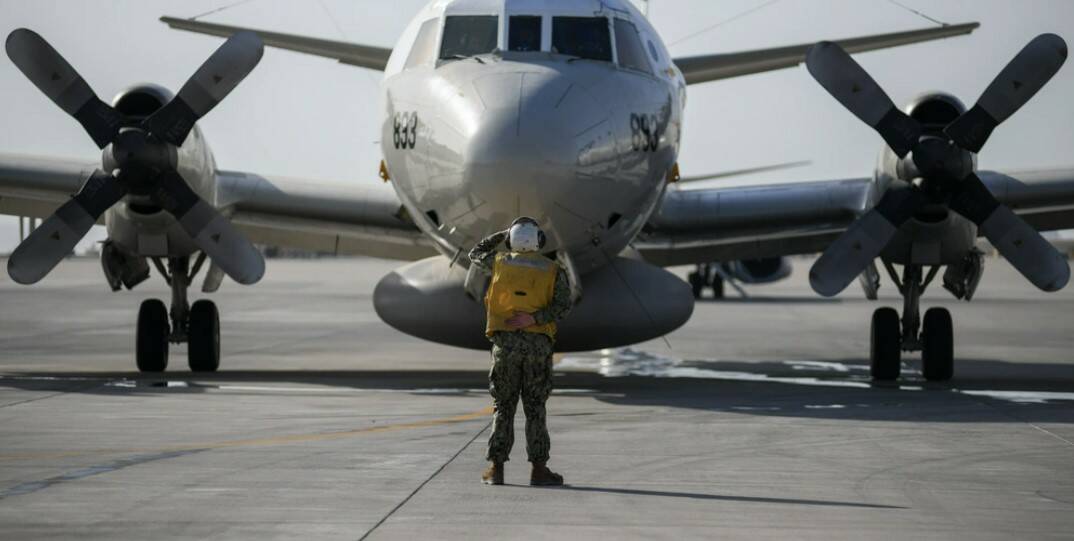With the start of the new year, Naval Air Station Whidbey Island has left something behind which leaders say is a major cultural shift for the Navy as a whole — the EP-3E Aries II surveillance aircraft, a renowned spy plane that touched down on the island from its last operational deployment in November.
Based on the P-3 Orion, the EP-3 is a multi-intelligence reconnaissance aircraft that provides commanders worldwide with almost real-time information and video. The Cold War-era plane holds sensitive receivers and antennas to exploit a wide range of emissions from deep within a targeted territory.
Since its first use in 1969, the EP-3 has been used for situational awareness, suppressing and destroying enemy air defenses and anti-air and anti-submarine warfare. During the Cold War the plane monitored Soviet radar, communications and submarines, then adapted to new operations following the war like tracking regional conflicts, terrorist communications and emerging military technologies.
In the 1990s, the Navy produced around 12 EP-3s to replace the original fleet, and the aircraft have been continuously updated with technological developments. It went from being a signal receiver to a multi-intelligence platform.
A typical EP-3E crew includes six flight crew and a reconnaissance crew of 18, including tactical evaluators, and cryptologic technicians, who would be drawn from the Navy, Marines, and Air Force.
EP-3s have operated in or near all of the world’s hotspots, including the South China Sea, Libya, Syria and the Caribbean. The plane became a worldwide focal point in 2001, when an EP-3 assigned to the National Security Agency’s Sensitive Reconnaissance Operations Program collided with a Chinese J-8 fighter jet over the South China Sea, near Hainan Island, killing the Chinese pilot and forcing the plane to land at a Chinese base and giving China access to sensitive information.
China detained the 24 crew members aboard the spy plane for 11 days, escalating tensions between the two counties, until the U.S. offered a statement expressing regret over the Chinese pilot’s death in the conflict.
Since phasing out the EP-3s, some spy planes have gone into retirement at the Davis-Monthan Air Force Base in Arizona. BuNo 156511, the plane involved in the Hainan incident, has been moved from the “boneyard” to the adjacent Pima Air & Space Museum, according to a press release.
The MQ-4C Triton, a high-altitude, long-endurance unmanned aerial vehicle, will take over most of the function of the EP-3, along with the P-8A Poseidon and some assets in space.
The Triton has already begun operating from Guam and Sigonella, and a third is set to appear in the fifth fleet area of operations, where the last EP-3 recently returned from. The establishment of the base there was the final piece in allowing the sundown of the spy plane.
As opposed to a highly trained crew of analysts, linguists and technicians, the Triton relies instead on remote operators and automated systems, which will require different training and culture altogether while reducing the risk to sailors. The Triton can fly higher and longer than the EP-3, relying on datalink bandwidth as opposed to on board analysis.
The Poseidon, which will also supplement some duties of the spy plane, can detect, geolocate and classify emissions. It also holds an advanced airborne sensor, and Boeing is currently developing new modular multi-mission pods which could offer rapid integration of specialized sensors.
According to a press release, the transition will provide the Navy only enhanced capabilities: greater range, endurance and durability in complex environments.
John Ney and Robert Pauley, members of the EP-3 Sundown Committee on Whidbey, declined requests for comment.



